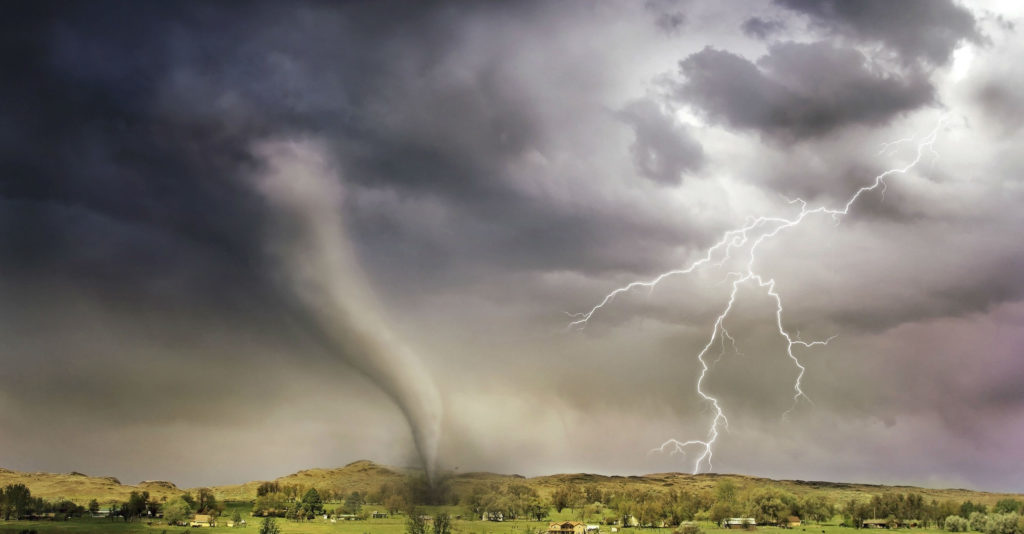
Tornado season began this month and lasts through the end of June in the Permian Basin and the northeast region of the U.S., but tornados can occur at any time of year, and at any time of the day or night.
According to the National Weather Service, there are two types of Tornado Alerts: Watch and Warning. A Tornado Watch is an alert to be prepared as tornadoes are possible in and near the watch area. A watch is meant to alert people to review and discuss emergency plans and check supplies in order to act quickly if a warning is issued. A Tornado Warning, on the other hand, means to take action because a tornado has been sighted or indicated by weather radar. A warning means there is imminent danger to life and property.
Axis has site-specific emergency response plans in place for employees regarding response procedure actions in case a tornado is headed toward a work area. These procedures include:
- Inclement weather emergency is identified and communicated to all personnel.
- Service Supervisor shall execute the Emergency Action Plan.
- Monitor weather conditions on site and provide information to personnel.
- If time permits, secure and/or tie down equipment.
- If time permits, secure outdoor objects that could blow away or cause injury or damage.
- If outdoors, get inside a building if possible. If shelter is not available or there is no time:
- Lie in a low-lying ditch or crouch near a strong building.
- Be aware of the potential of flooding.
- Use arms to protect head and neck.
- If in a vehicle, get out immediately and take shelter, or take shelter for “if outdoors” actions.
- Immediately following a tornado, actions should include:
- Remain calm and alert.
- Wait for emergency personnel to arrive.
- Account for all employees.
- Help injured employees.
- Do not move seriously injured employees unless at risk for further injury.
- Stay away from power lines and puddles with wires lying in them due to possibility of electrocution hazards.
- Stay out of heavily damaged buildings, which could collapse at any time.
- Do not use matches or lighters in case of leaking natural gas pipes or fuel tanks.
- If it can be done safely, take pictures of the damages for insurance purposes.
The American Red Cross says to watch for tornado danger signs: dark, often greenish clouds—a phenomenon caused by hail; wall cloud—an isolated lowering of the base of a thunderstorm; and a cloud of debris.
“Tornados are dangerous, but so is lightning,” says David Etchelecu, Vice President of HSE. “We have a robust program that includes lightning, hail, and tornado safety in response to the needs of our employees, our customers, and the communities in which we work.”
Axis employees have been given the most up-to-date procedures regarding emergency response to inclement weather. These resources are available in the palm of their hands through our safety management system, iScout, which is available on their mobile devices. iScout streamlines and simplifies Health, Safety, and Environmental processes and reporting as well as centralizes our safety, training, and fleet management. We also take the necessary steps to monitor weather conditions and adhere to our customer-specific requirements while on location.
Axis is committed to protecting the health and safety of our employees, customers, partners, and everyone we encounter during the course of doing business. We as a company expect all employees to observe Axis’ Safety Commitment. Safety is a founding core value and we strive to empower our employees with a strong safety culture every day.



Share This Article